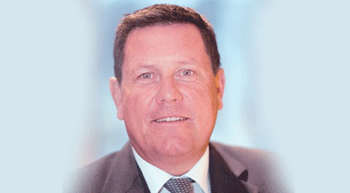
Scania will bring its global expertise to India
Brief us on the range on offer in HD truck segment for different verticals. For off-road transport, we offer our Scania P 410 8x4, a market leading tipper in terms of carrying capacity and productivity. This truck can be equipped with an 18.8 cu m rock body tipper or with a 32 cu m tipper body for coal transport. This truck is also equipped with Scania Opticruise for best fuel efficiency and ease of driving. We have two puller specifications: the G 460 6x4 and the R 500 6x4. The Scania R 500 6x4 features the first-ever V8 engine on the Indian roads, offering high torque ratings at low speed, essential for super over-dimensional cargo (ODC) transport. These vehicles are built to deliver goods under the toughest conditions.
Furthermore, we have our G 410 6x2 tractor. The G 410 6x2 is the most recent addition to Scania?s on-road range in India. With superior uptime, fuel economy and driver comfort, it is set to completely redefine haulage operations. The tractor is equipped with Scania Opticruise, which is an automated gear changing system for manual gearboxes. The system always chooses the most suitable gear in each situation, resulting in lower fuel consumption and improved drivability.
At Scania, we use our experience in Indian mines to develop robust performance steps tailored to the Indian market with the focus to provide the best possible Total Operating Economy (TOE) for our customers.
How do you expect to end this fiscal?
The current demand for trucks is about 130,000 units. We are targeting to sell about 500 trucks this year.
What are the challenges faced by your company?
Some of the industry reports detail that the competition among commercial vehicle manufacturers in India is expected to intensify as international OEMs raise the bar in terms of technology. At the same time, domestic OEMs invest to upgrade products and technology, strengthen dealer relationships and loyalty, reinforce distribution networks and build new competencies to defend their market shares. More than a challenge, we see this as an opportunity to expand. There is huge potential in India to accommodate large players and the market is expected to grow. Scania will bring its global expertise to India with customised value offerings focusing on TOE.
The hub and spokes model seems to have segmented the trucks market into three clear categories - low cost trucks, value trucks and premium trucks. What is your take on this?
We would argue that the hub and spokes model, when implemented, rather will divide the market in terms of heavy haulage and light haulage; whereas low cost, value and premium will be present anyhow in different proportions.
In matured markets, the trend is towards downsizing the engine; however in India, the engine size is increasing, especially for heavy-duty trucks. Are there any specific reasons for this?
We believe the Indian CV market is [somewhat] ?underpowered? right now. So the fact that the engine size increases is quite natural. This does not automatically mean higher fuel consumption. With correctly specified drivelines, there will be better fuel economy as well as overall performance.
What are your initiatives in training drivers?
Scania Driver Training can train even the experienced drivers to drive better in turn phenomenally contributing towards great TOE. The programme concentrates to leverage safe and efficient driving skills among the drivers. From a well-trained driver, one can expect to save up to 25 per cent on fuel alone, which also results in significant reduction in emissions.
Brief us on genuine spares and lube availability.
Service and parts availability is our top priority for the network creation. Apart from strategically located network stations, we are also strengthening ties with auto component suppliers in India.
What is the scope of e-retailing model in India?
At the moment, our focus is more towards establishing physical network stations. Once we complete the cycle of establishing comprehensive spread of networks, we will focus on additional value-added services like e-retailing.


 +91-22-24193000
+91-22-24193000 Subscriber@ASAPPinfoGlobal.com
Subscriber@ASAPPinfoGlobal.com